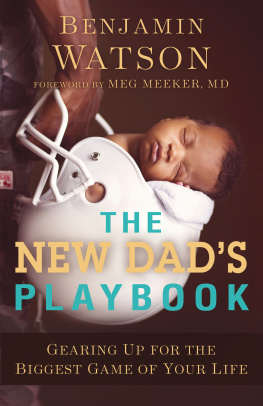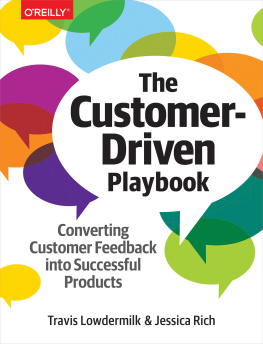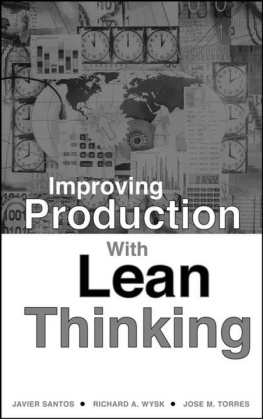The TPM Playbook: A Step-by-Step Guideline for the Lean Practitioner
Chris A. Ortiz

CRC Press
Taylor & Francis Group
6000 Broken Sound Parkway NW, Suite 300
Boca Raton, FL 33487-2742
2015 by Taylor & Francis Group
CRC Press is an imprint of Taylor & Francis Group, an Informa business
No claim to original U.S. Government works
Version Date: 20160121
International Standard Book Number-13: 978-1-4987-8260-9 (EPUB)
This book contains information obtained from authentic and highly regarded sources. Reasonable efforts have been made to publish reliable data and information, but the author and publisher cannot assume responsibility for the validity of all materials or the consequences of their use. The authors and publishers have attempted to trace the copyright holders of all material reproduced in this publication and apologize to copyright holders if permission to publish in this form has not been obtained. If any copyright material has not been acknowledged please write and let us know so we may rectify in any future reprint.
Except as permitted under U.S. Copyright Law, no part of this book may be reprinted, reproduced, transmitted, or utilized in any form by any electronic, mechanical, or other means, now known or hereafter invented, including photocopying, microfilming, and recording, or in any information storage or retrieval system, without written permission from the publishers.
For permission to photocopy or use material electronically from this work, please access www.copyright.com or contact the Copyright Clearance Center, Inc. (CCC), 222 Rosewood Drive, Danvers, MA 01923, 978-750-8400. CCC is a not-for-profit organization that provides licenses and registration for a variety of users. For organizations that have been granted a photocopy license by the CCC, a separate system of payment has been arranged.
Trademark Notice: Product or corporate names may be trademarks or registered trademarks, and are used only for identification and explanation without intent to infringe.
Visit the Taylor & Francis Web site at http://www.taylorandfrancis.com
and the CRC Press Web site at www.crcpress.com
CRC Press is a premier publisher of scientific, technology and medical content, reaching around the globe to publish the pioneering achievements of science that provide researchers, professionals, and students with the resources they need to make further advances. CRC Press is a member of Taylor & Francis Group, an informa business.
For more authoritative books in your field and for in-depth information about CRC Press books, visit www.crcpress.com
- Join our email list to receive exclusive, unadvertised discounts and alerts when new books publish in your field
- Visit Featured Authors to learn about your favorite author with detailed bios, news about their work, and discussions of their research
- Read the latest book reviews from industry experts, influencers, and thought leaders about STM (Science, Technology and Medicine) reference and textbooks
The tables in this ebook have been modified to enhance the reader experience. On compatible devices, the enhancement should keep the header rows visible as you scroll through a table.
Please report any issues with this ebook or any desired enhancements to the .
www.crcpress.com
How to Use This Playbook
In most cases, a playbook is a spiral-bound notebook that outlines a strategy for a sport or a game. Whether a football game, a video game, or even a board game, playbooks are all around us, and when written properly, they provide immediate and easily understood direction. Playbooks can also provide general information; then, it is up to the user of the playbook to tailor fit it to their individual needs.
Playbooks contain pictures, diagrams, quick reference, definitions, and often step-by-step illustrations to explain certain parts. Playbooks either can help you understand the entire game or can help you pick and choose to focus on one element. The bottom line is that any playbook should be easy to read and to the point and contain very little to no filler information.
The TPM Playbook is written for the Lean practitioner and facilitator. Like a football coach, a facilitator can use this playbook for quick reference and then be able to convey what is needed easily. If for some reason the person leading the actual TPM (Total Productive Maintenance) implementation forgets a play, the person can reference the playbook. Either you can follow page by page and use it to facilitate a TPM implementation or you can go directly to certain topics and use it to help you implement that particular play.
Total Productive Maintenance
Total Productive Maintenance is a companywide approach to improving the effectiveness and longevity of equipment and machines. Depending on how automated your production processes are, TPM could play a major role in your Lean journey. TPM is a critical component of production line success to ensure product flow; equipment uptime is not disrupted and is operating at optimal levels.
Regardless of proactive measures, random breakdowns may occur. The goal here is to minimize their occurrence, with most of the maintenance conducted during scheduled downtime. Part of a comprehensive TPM program is creating accountability and ownership at all levels to help change the mindset of the machine operators and maintenance workers. Both are responsible for maintaining equipment, and each group plays its own role. We often see a laissez-faire approach from maintenance departments in traditional manufacturing companies, where machine maintenance is reactive. Without an organized and structured TPM program, maintenance staff can develop a feeling of invincibility in which they are the lifeline of the company. This is not good. They play a vital role in the overall health of the company, but they must work according to certain standards and guidelines just like those we place on production and machine operators.
This playbook bridges these common gaps.
Introduction
At first glance, the improvement techniques within the Lean philosophy appear to provide a solution to many types of production-related issues. A powerful and effective improvement philosophy, Lean can prevent company failure or launch an organization into world-class operational excellence.
I have been a Lean practitioner for over 15 years and have been involved in many Lean transformations. It does not matter the industry you work in, the product you produce, and even the processes your company uses to transform a finished goodthe problems and opportunities you face are the same as those for everyone else. Your company is not different or the exception to every other company. You, as a Lean practitioner, desire a smoother-running facility, reduced lead times, more capacity, improved productivity, flexible processes, usable floor space, reduced inventory, and so on. Organizations implement Lean to make localized improvements or they can make Lean transform the entire culture of the business. Regardless of your aspirations and goals for Lean, you and many other companies face another similar situation: getting out of what I call boardroom Lean and moving toward implementation.
Have no illusions: Lean is about rolling your sleeves up, getting dirty, and making change. True change comes on the production floor, in the maintenance shop, in all the other areas of the organization and in implementing the concepts of Lean. Companies often become stuck in endless cycles of training and planning, with no implementation ever happening. This playbook is your guideline for implementation and is written for the pure Lean practitioner looking for a training tool and a guideline that can be used in the work area while improvements are being conducted. There is no book, manual, or reference guide that provides color images and detailed step-by-step guidelines on how to properly begin your TPM journey. The Total Productive Maintenance Playbook is not a traditional book, as you can probably see. It is not intended to be read like another Lean business book. The images in this playbook are from real TPM implementations, and I use a combination of short paragraphs and bulleted descriptions to walk you through how to effectively implement TPM.















